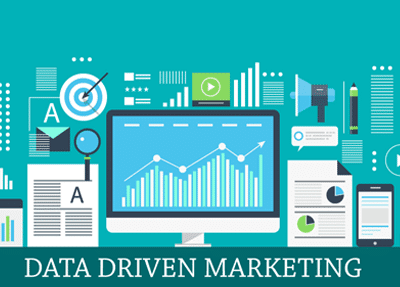In an age where consumers are bombarded with information from all directions, businesses must adapt to stand out and effectively engage their target audience. One of the most transformative trends in marketing today is the shift towards data-driven marketing. This approach leverages data and analytics to inform marketing strategies, personalize customer experiences, and optimize campaigns. Here’s why data-driven marketing is not just a trend but the future of effective marketing.

Table of Contents
Toggle1. Enhanced Customer Understanding
Data-driven marketing allows businesses to gain deeper insights into customer behaviors, preferences, and needs. By analyzing data from various sources, such as social media interactions, website analytics, and CRM systems, marketers can segment their audience more accurately. This enhanced understanding enables businesses to tailor their messaging and product offerings to resonate with specific customer groups, leading to increased engagement and loyalty.
2. Personalization at Scale
Today’s consumers expect personalized experiences. They want to feel understood and valued by the brands they engage with. Data-driven marketing enables companies to create highly personalized content and offers based on individual behaviors and preferences. For instance, by analyzing past purchase history and browsing behavior, marketers can recommend products that align with a customer’s interests, increasing the likelihood of conversion. This level of personalization fosters stronger relationships with customers and enhances brand loyalty.
3. Improved Campaign Performance
With data-driven marketing, businesses can monitor and analyze campaign performance in real-time. This capability allows marketers to identify what works and what doesn’t, enabling them to make informed adjustments quickly. For example, A/B testing different ad creatives or messaging helps marketers determine which versions yield better results. By optimizing campaigns based on data insights, businesses can maximize their return on investment (ROI) and achieve better outcomes.
4. Predictive Analytics for Future Planning
One of the most powerful aspects of data-driven marketing is predictive analytics. By leveraging historical data, businesses can forecast future trends, customer behaviors, and potential outcomes. This foresight enables companies to make proactive decisions and allocate resources more effectively. For example, retailers can predict seasonal demand for certain products, allowing them to adjust inventory levels accordingly and avoid stockouts or overstock situations.
5. Enhanced Customer Retention
Acquiring new customers is often more expensive than retaining existing ones. Data-driven marketing helps businesses identify at-risk customers and implement retention strategies. By analyzing engagement metrics, feedback, and purchase history, marketers can create targeted campaigns to re-engage customers who may have become inactive. This approach not only boosts customer retention but also fosters long-term loyalty and advocacy.
6. Real-Time Feedback and Adaptation
The digital landscape is constantly evolving, and consumer preferences can change rapidly. Data-driven marketing allows businesses to gather real-time feedback from various channels, enabling them to adapt their strategies quickly. For instance, if a particular ad campaign is underperforming, marketers can immediately pivot their approach or reallocate budgets to more effective channels. This agility is crucial for staying competitive in today’s fast-paced market.
7. Better Resource Allocation
Data-driven marketing provides insights into which marketing channels and strategies yield the best results. This information enables businesses to allocate their marketing budgets more effectively. By identifying high-performing channels, marketers can focus their efforts and resources on strategies that drive the most significant impact, reducing wasted spending on less effective initiatives.
8. Competitive Advantage
In a crowded marketplace, gaining a competitive edge is essential. Data-driven marketing equips businesses with the insights they need to differentiate themselves from competitors. By understanding market trends and consumer behavior, companies can identify opportunities for innovation and create unique value propositions. This ability to respond quickly to market changes and customer needs can set a brand apart and establish it as a leader in its industry.
9. Fostering a Culture of Data Literacy
Embracing data-driven marketing encourages organizations to develop a culture of data literacy. By equipping teams with the skills and knowledge to interpret data, businesses can make more informed decisions at all levels. This culture fosters collaboration between marketing, sales, and product development teams, leading to more cohesive and effective strategies that drive business growth.
Conclusion
Data-driven marketing is not just a passing trend; it is the future of effective marketing strategies. By leveraging data and analytics, businesses can gain deeper insights into their customers, create personalized experiences, and optimize their campaigns for better performance. As technology continues to evolve, the ability to harness and analyze data will become increasingly crucial for staying competitive and meeting the demands of modern consumers. In a world where data is abundant, the organizations that embrace data-driven marketing will be best positioned to thrive in the future.


No responses yet